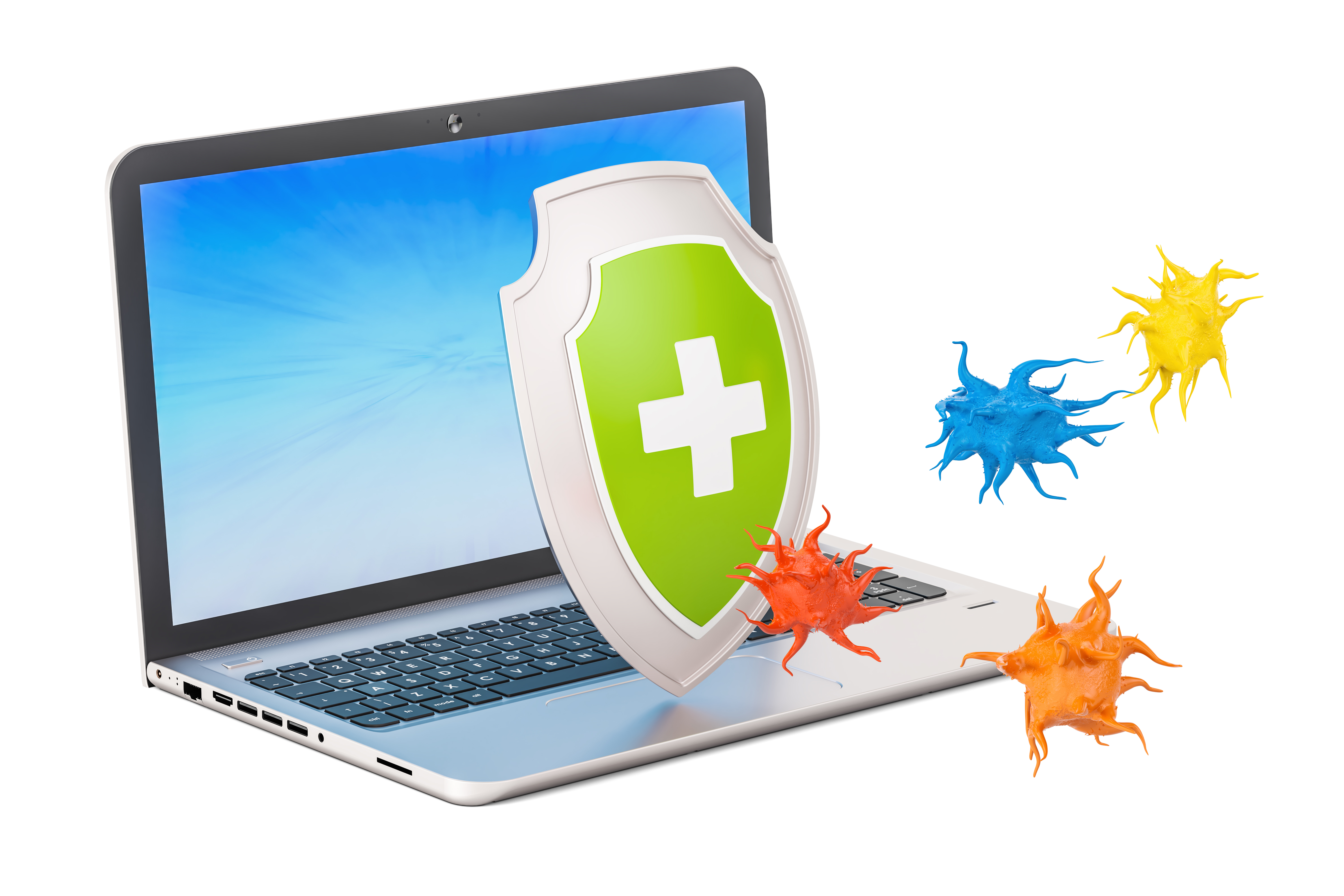
The digital world offers a treasure trove of opportunities, from communication and entertainment to online shopping and banking. However, this interconnectedness also introduces vulnerabilities. Malicious software, or malware, lurks online, waiting to infiltrate devices and wreak havoc. Fortunately, a strong line of defence exists anti-virus and cyber security software.
This article delves into the world of these essential tools, explaining how anti-virus & cyber software work and exploring the benefits of a layered security approach. We’ll guide you through the various types of cybersecurity software available, helping you choose the right ones to safeguard your digital life. Remember, combating cyber threats requires a multi-pronged approach. By understanding these software solutions and practising safe online habits, you can navigate the digital world with confidence and peace of mind.
Understanding Anti-Virus & Cyber Software
Anti-virus software acts as your first line of defence in the fight against malicious software, often referred to as malware. At its core, anti-virus software is designed to detect, quarantine, and remove malware from your devices. But what exactly is malware?
Malware encompasses a broad range of threats, each with its own malicious intent. Here’s a look at some common culprits:
- Viruses: These self-replicating programs can attach themselves to legitimate files and spread rapidly across your device, infecting other files and potentially compromising your system.
- Worms: Similar to viruses, worms exploit network vulnerabilities to spread from device to device, often by targeting weaknesses in operating systems.
- Trojans: These disguise themselves as legitimate software, tricking users into installing them. Once installed, Trojans can steal data, disrupt operations, or download other malware onto your device.
- Ransomware: This particularly nasty form of malware encrypts your files, essentially holding them hostage until you pay a ransom to regain access.
So, how does anti-virus software combat these threats? Anti-virus programs rely on signature-based detection. These signatures are essentially digital fingerprints of known malware threats. The software scans your files and programs against these signatures, raising a red flag if it detects a match. Upon detection, the anti-virus software can quarantine the infected file, preventing it from further harm or attempting to remove it altogether.
However, anti-virus software is only effective against known threats. This is why signature updates are critical. Anti-virus vendors constantly update their databases with new signatures to keep pace with the ever-evolving malware landscape. Regular updates ensure your software can recognize and combat even the latest threats.
By understanding the types of malware and how anti-virus software works, you can appreciate its role in safeguarding your digital life. In the next section, we’ll explore how anti-virus software integrates into a broader cyber security strategy.
Beyond Anti-Virus: Expanding Your Cyber Security Toolkit
While anti virus software is a crucial first line of defence, a layered security approach offers the most comprehensive protection in today’s complex digital landscape. This approach involves using a combination of software tools, each addressing specific security needs and working together to create a fortified barrier against cyber threats.
Let’s explore some of the additional cyber security software solutions that can complement your anti virus program:
- Firewalls: Imagine a firewall as a security checkpoint guarding the entrance to your digital network. Firewalls monitor incoming and outgoing traffic, filtering out suspicious activity and preventing unauthorized access to your device.
- Anti-malware: While traditional anti-virus software focuses on viruses, anti-malware software offers broader protection against a wider range of evolving threats. This includes spyware that steals your data, adware that bombards you with unwanted ads, and even zero-day attacks that exploit previously unknown vulnerabilities.
- Anti-phishing: Phishing scams are a constant threat. They often use deceptive emails or websites to trick users into revealing sensitive information. Anti-phishing software can help you identify these malicious attempts by analyzing email content, website addresses, and other red flags.
- VPN (Virtual Private Network): Public Wi-Fi networks can be a breeding ground for cyber threats. A VPN encrypts your internet traffic, creating a secure tunnel that protects your data from prying eyes when using public Wi-Fi. This is especially important when accessing personal information like bank accounts or online transactions.
- Parental Controls: For families with children navigating the online world, parental control software allows you to manage their internet access, set time limits, and filter out inappropriate content. This helps create a safer online environment for your kids.
By implementing a layered security approach that combines anti-virus software with these additional tools, you can significantly enhance your overall cyber defences. In the next section, we’ll delve into choosing the right software for your specific needs.
Choosing the Right Software for Your Needs: Building Your Digital Defence

With a variety of anti-virus and cyber security software options available, selecting the right tools can feel overwhelming. Here are some key factors to consider when making your decision:
- Protection Features: Not all anti-virus software is created equal. Carefully evaluate the specific features offered by different programs. Do they include real-time scanning, email protection, or cloud-based detection for the latest threats? Consider your specific needs and choose software that offers the features most relevant to you.
- Device Compatibility: Ensure the software you choose is compatible with your operating system (Windows, Mac, Android, etc.) and the devices you plan to protect. Some software offers multi-device licenses, allowing you to secure all your devices with a single subscription.
- Performance Impact: Anti-virus and cyber security software can sometimes consume system resources. Consider the software’s impact on your device’s performance, especially if you have an older computer or limited resources. Look for software that offers options to balance security with performance.
- Ease of Use: A user-friendly interface is crucial for managing your cyber security software effectively. Choose software with clear menus, intuitive navigation, and readily available support resources. Regular updates are also essential, so ensure the software offers automatic updates or user-friendly update processes.
- Cost: Anti-virus and cyber security software come in both free and paid versions. Free versions often offer basic protection, while paid options typically provide more comprehensive features, real-time protection, and additional functionalities like firewalls or VPNs. Evaluate your needs and budget to determine the best value for your money.
Remember, the most effective approach combines a reliable anti-virus program with additional security software tailored to your specific needs. In the next section, we’ll discuss some essential online safety practices that complement these software solutions.
Additional Security Measures: Your Digital Hygiene Routine
Even the most robust software suite can’t guarantee complete online security. A crucial line of defence lies in practising good online hygiene, a set of habits that minimize your risk of encountering cyber threats. Here are some key practices to integrate into your digital routine:
- Strong Password Management: Passwords are the gatekeepers to your online accounts. Resist the urge to reuse weak passwords and instead create strong, unique passwords for each account. Consider using a password manager to generate and securely store these complex passwords. Additionally, enable two-factor authentication whenever possible, adding an extra layer of security by requiring a code from your phone or email in addition to your password.
- Download with Caution: The internet is a vast landscape, and not everything you encounter is safe. Only download software from trusted sources, such as the official app stores or reputable developer websites. Be wary of downloading free software or clicking on unknown links, as they may contain malware.
- Beware of Phishing Attempts: Cybercriminals are masters of deception. Phishing emails and websites often mimic legitimate institutions to trick you into revealing personal information or clicking on malicious links. Be cautious of unsolicited emails, especially those urging immediate action or containing suspicious attachments. Never enter sensitive information on websites unless you’re absolutely certain of their legitimacy.
- Software Updates are Essential: Software developers constantly release updates that address security vulnerabilities. Keeping your operating system, applications, and anti-virus software up-to-date is critical. Enable automatic updates whenever possible, or schedule regular checks for new updates to ensure you have the latest security patches in place.
By incorporating these practices into your daily online activities, you significantly strengthen your overall cyber defences. Remember, online security is an ongoing process. By combining a layered security approach with good online hygiene, you can navigate the digital world with confidence and peace of mind.
Conclusion
The digital world offers endless opportunities, but it also harbours potential dangers. Cyber threats are constantly evolving, making comprehensive cyber security a necessity. This article explored the importance of anti-virus software as a first line of defence and introduced the concept of a layered security approach. We discussed various cyber security software options and highlighted factors to consider when choosing the right tools for your needs.
However, software solutions alone are not enough. Practising good online hygiene – strong password management, downloading with caution, and staying vigilant against phishing attempts – is equally important. By combining these practices with regular software updates, you create a multi-layered security strategy that significantly reduces your risk of encountering cyber threats.
Remember, online security is an ongoing journey. Stay informed about the latest threats, keep your software up-to-date, and don’t hesitate to seek help if you have any concerns. With a proactive approach and the right tools in place, you can build a secure fortress in the digital age and navigate the online world with confidence.
